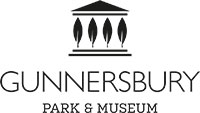In this second blog, curator Amy Dobson shares some more stories of local LGBTQ+ people from Ealing and Hounslow who have made history.
Lesbian, Gay, Bisexual, Transgender and Queer (LGBTQ) Pride Month is celebrated globally each year in the month of June to mark the 1969 Stonewall Riots, a series of demonstrations which were carried out by members of the LGBTQ+ community in response to a police raid which occurred at the Stonewall Inn in Greenwich Village, New York. The Stonewall Riots were a tipping point for the LGBTQ+ rights movement, and paved the way for annual Pride celebrations that now take place in hundreds of locations across the world.
The purpose of Pride Month is to recognize the impact that lesbian, gay, bisexual and transgender individuals have had on history locally, nationally and internationally. Ealing and Hounslow have a rich and diverse LGBTQ+ history ranging from musicians and actors, to authors and architects.
Dusty Springfield
Dusty Springfield, best known for songs like ‘Son of a Preacher Man’, ‘I Only Want to Be With You’ and ‘Wishin’ and Hopin’’, was born in 1939 Mary Isobel Catherine Bernadette O’Brien. From the age of 10, she lived at 2 Kent Gardens in North Ealing and she attended St Anne’s Convent School in Northfields – now known as Ealing Fields High School. She got the nickname “Dusty” from playing football outside in the street with the boys!
At St Anne’s, the nuns all predicted that the shy, quiet Mary O’Brien would go on to become a librarian - little did they know!
At a young age, Dusty and her older brother Dion started singing and making mix tapes in their parent’s garage. By the age of 16, Dusty had swapped her glasses and auburn hair for high heels, make up and startling peroxide blonde hair! She began performing in local clubs with her brother and then in 1958, Springfield joined her first singing group, The Lana Sisters which was an all-girl singing trio.
Two years later, Mary, her brother Dion and a family friend Tim teamed up and started a group called The Springfields. It was at this point that she adopted the new persona of Dusty Springfield.
It wasn’t long before before Dusty Springfield embarked on her own solo career. She was one of the most successful British female performers in history, with six top 20 singles in the United States and 16 in Europe. By the mid-1960s she was known as one of the best voices ever in British pop, and overseas in the USA she became a leading player alongside the black female superstars of the era.
She became known for her blonde bouffant, heavy makeup and her colourful evening gowns—a style that was emblematic of the Swinging Sixties.
Though her sexuality was an open secret to the gay community, the fact that Springfield was in relationships with women, is not common knowledge today thanks in part to the legacy of homophobia that left prominent queer figures in constant fear of being outed.
During an interview in 1970, Dusty Springfield said:
‘People say that I’m gay, gay, gay, gay, gay, gay, gay, gay. I’m not anything.”
Yet, at a time when any suggestion of non-normative sexuality was considered career suicide, Dusty Springfield committed an act of bravery during a 1970 interview with Ray Connolly of the London Evening Standard. She told him
“A lot of people say that I’m bent, and I’ve heard it so many times that I’ve almost learned to accept it... I know I’m perfectly capable of being swayed by a girl as by a boy. More and more, people feel that way and I don’t see why I shouldn’t.”
She was linked to many women during her life, including photojournalist Faye Harris, singer Carole Pope and singer-songwriter Norma Tanega who wrote some of Dusty’s songs such as Go My Love. In 1983 she married actress Teda Bracci, whom she met at an Alcoholics Anonymous meeting. Though the wedding wasn’t legally recognized they lived together for two years before separating, after a very tumultuous relationship.
Later in life, Springfield became a camp icon, attracting gay fans and drag impersonators. In 1994 a breast cancer diagnosis took a toll on her career, and she passed away in 1999.
Charles Robert Ashbee
Charles Robert Ashbee was born in 1863 in Isleworth and was an architect, designer and leader of the Arts and Crafts Movement in England. At the turn of the 20th century he was one of the most significant figures in British artistic and cultural life. Ashbee started up a small craft workshop in the East End of London in 1888 called the Guild of Handicraft after being inspired by the Romantic anti-industrialism of John Ruskin and William Morris.
Charles Ashbee was a gay man at a time when homosexuality was illegal in the UK. He is believed to have been a member of a number of groups that provided support and understanding to LGBTQ+ people, as well as being a member the Order of Chaeronea which was a secret male dominated society for homosexuals founded by the poet George Ives in 1897 as a result of his belief that LGBTQ+ people would not be accepted openly in society and therefore must have a means of underground communication.
In 1898, to cover up his sexuality, Ashbee married Janet Forbes who was the daughter of a wealthy London stockbroker. He admitted his sexual orientation shortly after she accepted his proposal. They had rather tumultuous start to their marriage but after 13 years the couple eventually had four children together.
As a designer he often designed objects to be made of silver and other metals such as belt buckles, jewellery, cutlery and tableware. His work can be seen in many museums across the world such as The Victoria & Albert Museum and The Metropolitan Museum of Art. As an architect, CR Ashbee designed buildings in Budapest, London, Sicily and across Europe.
